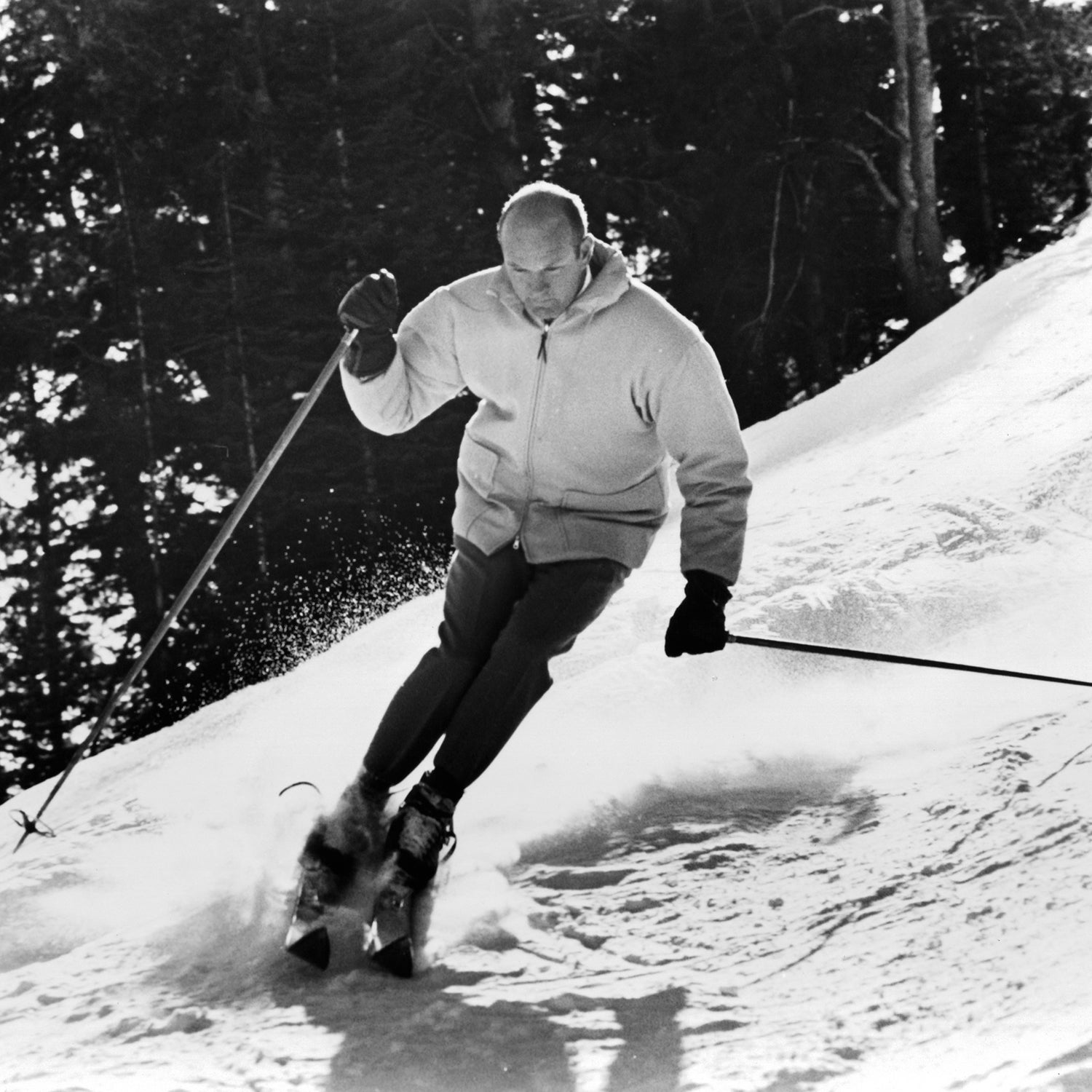If you’ve ever sat in a crowded movie theater to see the year’s greatest ski footage, you’ve participated in the legacy of Warren Miller. He was the progenitor of the seasonal stoke film—starting with the —and created a world that expanded far beyond the movies that bear his name. “Warren was the Beatles of the ski movie. He didn’t invent it, but brought it to the masses,” says skier and filmmaker Greg Stump, who directed film and who freely admits to cribbing off Miller.
But we all know how much drama plagued the Beatles behind the scenes. , a new documentary that premiered last week , examines how the story of Warren Miller the ski icon diverged from the reality of Warren Miller the human. It includes some of Miller’s last interviews before his death in 2018 at the age of 93 and shows how Miller pioneered the idea of being a ski bum, as well as what he lost by obsessively pursuing a life devoted to ski movies.
Parts of Miller’s life are already skier lore: How he and his buddy Ward Baker lived in a Dodge Phaeton in the Sun Valley parking lot, eating rabbits they’d shot the fall before. How they bilked starlets and wealthy debutantes into taking them to dinner, or at least to the hot tub. But, as Ski Bum reveals, Miller’s story is darker and more complicated than that. He grew up in an abusive household headed by an alcoholic itinerant father. The U.S. Army, and then skiing, were his routes out, but his unstable family threaded through the rest of his life. In 1952, his mother and sister, who had been helping him run his fledgling film business, stole $100,000 from the company bank account and disappeared. He never saw them again.
Around that time, in 1951, his first wife, Jean, died of spinal cancer shortly after they married and had their first child. Miller was heartbroken and broke while raising a new son on his own and trying to establish a film career. He threw himself into work, obsessively growing the business.
Skiing, at its best, seems effortless and unforced—just a graceful slide downhill. Miller’s films strived to capture that frictionless fantasy. He became a character in them, too, his deep voice and dry humor narrating the adventure and encouraging skiers to scrap their boring lives and head for the hills. But under the surface, he was struggling to keep his own life together. That’s where Ski Bum is most interesting.
His movies in the early 1960s show him skiing with his second wife and young children in what looks an idyllic life. Really, he was largely alone. Miller skipped out on time with his family for his workaholic commitment to his ski films. He’d be gone all winter shooting, lock himself away to edit all summer, and then go on the road in the fall to show the film. He wasn’t there when his daughter, Chris, was born in 1957. His second wife eventually cheated on him and left him, exhausted by single parenting while he lived on the road.
Miller’s life and career tracked the arc of skiing and vice versa. He was there in Sun Valley, one of the first ski resorts in the country, right when the sport was gathering steam. As the scope of his films grew, to encompass international destinations and spinoff TV series, so did the world of skiing. He documented the explosive growth of ski resorts in the ’60s and ’70s and the rise of extreme skiing in the ’80s. He filmed a segment on snowmaking, and within the next few years, the technology had spread across the country.
It’s not all flawless. There are parts of Miller’s legacy that haven’t aged well, and feel classist and sexist. He loved to make fun of gapers, and his offhand sexist comments feel both dated and gross. But largely, he captures the buzz of a growing, adventurous sport and lifestyle. His iconoclastic obsession changed both the sport of skiing and the way we skiers envision it. “It’s kind of a chicken and egg, Warner Miller and the growth of skiing,” says Olympic freestyle skier Jonny Moseley, who took over narrating the films after Miller stepped back. That symbiotic relationship is evident in this film.
But as sparkly as the skiing life looks, being that singly focused—he directed 38 films in total—comes with dark sides and sacrifices. Ski Bum follows another family fallout, when Miller’s son Kurt and his partner took over the film company in 1989 and steered it toward corporate sponsorship and bigger ticket sales by cutting out Miller’s voice and corny jokes. He was essentially pushed out by his own son. Unfortunately, the film glosses over that painful break and misses an opportunity to explore this important emotional arc. It never resolves his tense relationship with his children, even though they’re interviewed and feature prominently.
That, more than anything, seems like the ski bum story. Miller was propagating the myth that you can have it all while focusing all of his energy on one thing. In his last interview, it’s clear that Miller is trying to tell the story until the end. “Let them have this fantasy thing about this wonderful life I lived,” he says.


